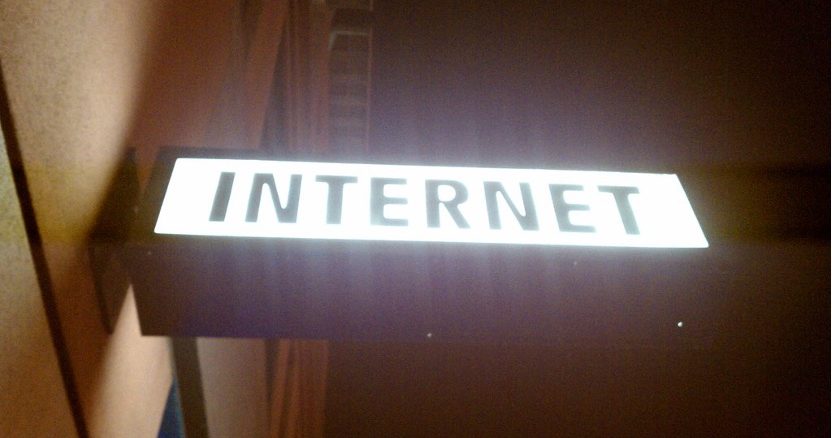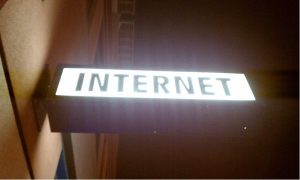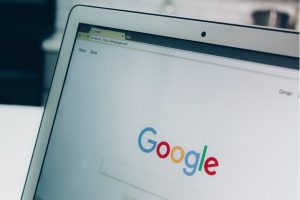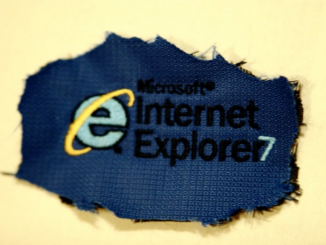

The Internet breaks the limitations of space, provides a new medium for people to understand knowledge and discuss topics, plays an important role in recording events and sharing information, and brings major changes to the economy and life. The Internet has engulfed everyone into an era of algorithms. The Internet has increased efficiency and enabled people to gain wealth and happiness. The development of the Internet seems to be the gospel of mankind. But at the same time, some prejudices and stereotypes have also been gradually strengthened. Internet culture is full of “online racism, hate speech, harassment, and fake news” (Flew, 2019). This article will demonstrate that the growth of the Internet is severely affected by structural inequality and that the Internet has exacerbated this inequality.

Historical origin and current situation
As early as the beginning of the Internet, the phenomenon of inequality has appeared. The structural prejudice from the early Internet continues to affect modern digital culture. The culture of “largely white, male and middle-class” is still advocated. “Bro-culture” excludes ethnic minorities. Racial inequality within Silicon Valley has attracted much attention. (Turner, 2021). Today’s Internet environment still hasn’t gotten rid of this situation.
The structural inequality in the current Internet environment is more diversified and not optimistic. Professor Noble (2019) used the example of searching for black girls to talk about the prejudices and stereotypes that appeared in search engines. He pointed out that searching for “black girl” on Google, a lot of sex-related information will pop up. Not only that, black girls are not the only group to be marginalized in search engines. Research shows that in addition to black girls, search engines have prejudices against “Asian girls, Latino girls, and white girls”. This phenomenon reveals that the identity of women is commercialized and sexualized in search engines. When searching for “woman cannot”, the recommended search will show recommended terms such as woman cannot drive, and woman cannot go to school. The recommendation of search engines shows the stereotyped information of women’s weakness and strengthens the structural inequality of gender.

When a lot of information of the same type is searched, the search engine will detect it and recommend it to more users without detecting whether there is insulting information. This is also related to Google’s search mechanism. In addition to crawling other users’ search information, information monopolies such as Google could prioritize web search results based on various topics. For example, recommend web pages that promote their own business interests, not those of competitors or small companies, because the profits of advertisers of these small companies are much lower than that of large multinational companies. And when some companies also have a biased tendency, this even more severely leads to gender discrimination in search results. Therefore, in this case, user clicks, coupled with the business process that allows paid ads to be prioritized in search results, means that women’s rankings on search engine pages are lacking and full of negative stereotypes of gender.

The Internet contributes to the structural inequality
With stereotypes prevalent in contemporary culture, the Internet is a boost to the phenomenon of network structural inequality. In the research of Vaidhyanathan (2012), he pointed out that Google has penetrated people’s life and culture to affect people’s attention and behavior, becoming “Googlization”. Google is a comprehensive catalog collection of individual and collective judgments, opinions, and wishes. He believes that Google is no different from the early networks (Internet, World Wide Web, etc.). It can obtain private information and become a tool that users rely on (Vaidhyanathan, 2012).
In the 2020s, the prevalence of major social networks (Tik Tok, Facebook, Instagram, etc.) broke Google’s dominance, but what remains unchanged is that users still have a high degree of dependence on the Internet. And because the Internet has a great impact on people’s personal behavior, habits, opinions, and judgments, the spread of structural inequality has been further expanded to every corner through the Internet. The concept of The Filter Bubble proposed by Pariser (2011) shows that when Internet companies filter information for users, in order for users to continue to stay on the page, they will cater to users’ preferences and only recommend the content that “you might like better”. Therefore, content that differs from the user’s opinion will be excluded from the recommendation algorithm, because Internet companies believe it will make it easier for you to leave their apps. In this way, the user stays in the information cocoon and only meets the content that does not need to be laborious to think and accept, and the stereotype is deepened again and again.

User preferences affect big data recommendations, and big data recommendations have an impact on users’ opinions and behaviors. A little bit of structural inequality has been exaggerated in this kind of constant back and forth movement.
In fact, structural inequality on the Internet does happen from time to time. In recent years, examples of artificial intelligence systems discriminating against ethnic minorities are not uncommon, including facial recognition systems that cannot identify women or African Americans and brown people, or opaque, unimplementable, and discriminatory recruitment algorithms, etc. (Stevens, 2021). Take systemic racial discrimination as an example. When searching for black people on Google, the following prompts may be mostly negative, such as crime, anger, poverty, etc. The reason why this kind of systemic bias indicated by the search results is “Algorithmic bias” is that the racial discrimination encountered by blacks in the American context is not only derived from individual ideological bias but is scattered in all aspects (Noble, 2019). Keyes (2021), who studies gender, race, and power in artificial intelligence systems at the University of Washington, said that discriminatory algorithms and policies also illustrate the lack of diversity among policymakers. For example, among the 705 members of the European Parliament, only a few are people of color, and all 27 European Commissioners are white.
The deviations of Internet algorithms often reflect discrimination and inequality in society. Therefore, discrimination is not only in science and technology, it means that there are inequalities in other aspects such as policy, law, and economy, and structural inequality is just more intuitively and generally reflected on the Internet.
How Internet improve network structural inequality
Artificial intelligence has transformative potential in reshaping society, our economy, and our working lives, but without legal review, international supervision, and discussion, we will enter a cyber age of racism, sexism, and class prejudice (Bartoletti, 2020). The Internet should connect more people, enhance communication between different groups of people, narrow the gap between the rich and the poor, and enable the development of underdeveloped areas. As a new generation of netizens, each netizen should also raise their awareness and guard against being used by technology to become an accomplice in exacerbating structural inequality. Be a user of a new technology instead of being used by the technology.
Conclusion
The Internet is a double-edged sword. It also brings huge challenges when it brings huge opportunities. The development of the Internet is largely affected by structural inequality, which has also deepened the problem of structural equality. Not only the gender and race mentioned in this article, but there are also too many structural inequalities in social class, nationality, disability, sexual orientation, global North-South differences, and so on. These inequalities exacerbate discriminatory practices against marginalized groups, including women, and show that Internet technology is exacerbating these inequalities.
References
Bartoletti, I. (2020). An artificial revolution : on power, politics and AI . The Indigo Press.
Lusoli, Alberto, and Turner, Fred (2021), ‘“It’s an Ongoing Bromance”: Counterculture and Cyberculture in Silicon Valley—An Interview with Fred Turner. Journal of Management Inquiry 30(2), pp. 235-242.
Noble, SafiyaU. (2018) A society, searching. In Algorithms of Oppression: How search engines reinforce racism. pp. 15-63. New York: New York University
Pariser, E. (2011). The filter bubble : what the Internet is hiding from you . Viking.
Stevens, N., & Keyes, O. (2021). Seeing infrastructure: race, facial recognition and the politics of data. Cultural Studies (London, England), 35(4-5), 833–853. https://doi.org/10.1080/09502386.2021.1895252
Terry Flew (2019), ‘Guarding the Gatekeepers: Trust, Truth and Digital Platforms’, Griffith Review 64, pp. 94-103
Vaidhyanathan, S. (2012). The Googlization of Everything : (And Why We Should Worry) . University of California Press,. https://doi.org/10.1525/9780520952454

This work is licensed under a Creative Commons Attribution 4.0 International License.


